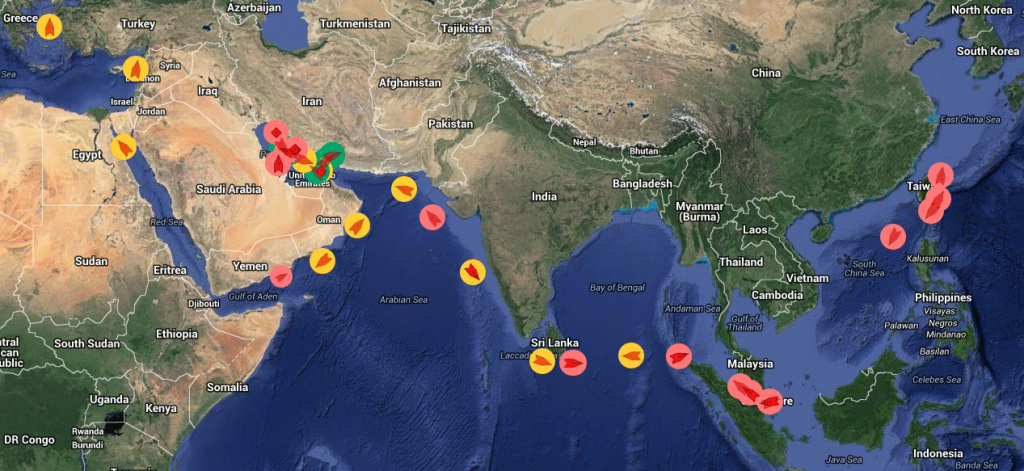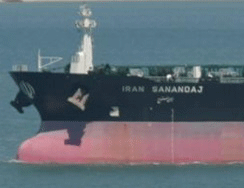Using MarineTraffic it is possible to track the Iranian tanker fleet and see when its VLCCs filled with oil start moving and hit the market
There is a great deal being written in both the general media and maritime press on Iran’s tanker fleet. With many pieces of coverage focusing on the ability Iran will soon have (thanks to the lifting of sanctions) to ‘re-join’ the global energy market, the layman could be forgiven for thinking that all of Iran’s tanker fleet has been idling away the time at anchor off the Iranian coast.
However, through all the years of sanctions, many vessels in the Iranian tanker fleet have been busy trading. Using MarineTraffic tools, fleets representing the three vessel sizes that the National Iranian Tanker Company (NITC) uses to transport crude oil have been created. The screenshot below from the MarineTraffic live map shows VLCCs in red circles, Suexmax tankers in yellow circles and Panamax tankers in green circles.

Even without American and European business, some, but not all of NITC’s tankers were able to move cargoes throughout the sanctions period by reflagging and renaming their vessels and working with Chinese and Indian buyers. Today these shipsare busy undertaking voyages throughout the Middle East, Far East and even as far west as Turkey. As Western companies work out the business and transactions they can now undertake with some but not all sanctions lifted, it is likely that NITC vessels will sail into European waters and be chartered to transport cargoes around the world on their behalf. Before sanctions were imposed, Iran was exporting around 800,000 barrels per day to Europe, with Shell and Total among the main buyers. In January this year Lloyd’s Register announced that it would now be classifying NITC vessels. This week the International Union of Marine Insurers announced that non-US marine insurers and reinsurers would now able to assess and quote all shipping risk linked with Iran or proposed by Iranian-domiciled companies.

The lack of this European business over the past few years has created a surplus of VLCCs. 17 are pictured below, moored off Shirinoo, a village on the Iranian coast. Each of the VLCCs pictured can carry around 2 million barrels of oil, meaning that so long as each of the vessels is in working order, NITC has instant extra capacity of c. 34 million barrels.
Using MarineTraffic notifications, it is possible to be alerted every time that an NITC vessel arrives or departs from a port. The MarineTraffic blog team are keeping a close watch and will be sure to alert users as soon as an NITC vessel calls at a European port.
On Monday 1 February, the NITC vessel furthest west was Suezmax tanker Sabiti, sailing north of the Greek islands Psara and Chios in the Aegean Sea. It is likely that the tanker was conducting Turkish business, although its crew had evidently switched off its AIS, as no signal had been broadcast for 73 hours.

‘Sabiti’ used to be named ‘Sandanaj’ – NITC vessels change their names and flags on a frequent basisSabiti is pictured below in a photo from the MarineTraffic database, passing through the Suez canal in 2006. At the time the vessel had a different name, Sanandaj. Almost all NITC tankers have been renamed and assigned new flags, some several times over, to help avoid unwanted scrutiny and attention during the sanctions period.

